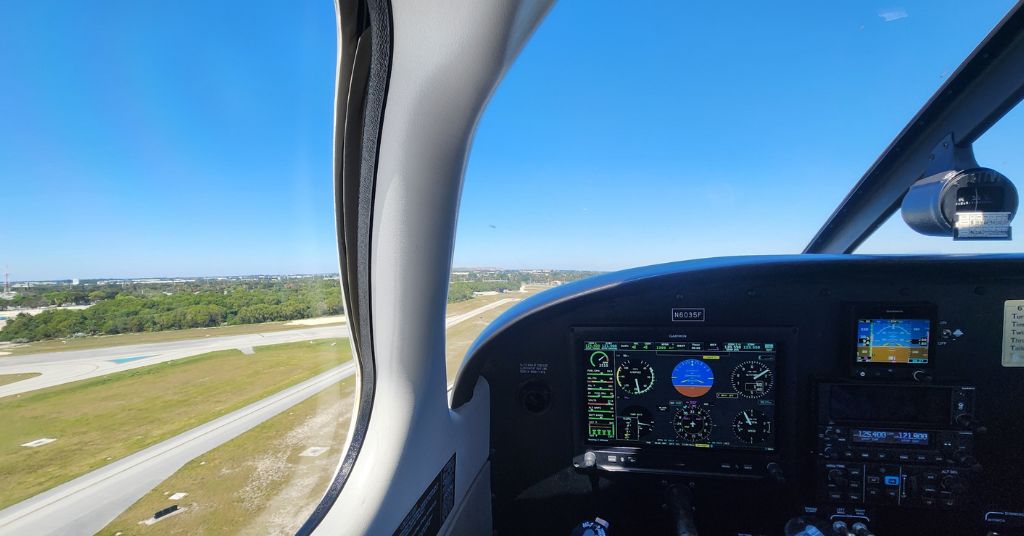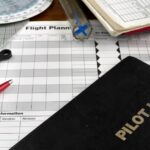Glass Cockpits first entered service with the military in the late 60s and early 70s. These consisted of a multi-function display in the F-111. By the late 70s and early 80s, NASA primarily used electronic flight displays on many platforms to enhance situational awareness.
By the 1990s, LCD panels were being added to commercial aircraft, from the MD-81 to the 747. As the technology improved, so did the complexity of the systems. Garmin started selling the G1000 in early 2004, and it was the first time that “Glass” was widely introduced into the General Aviation fleet.
In 1997, Captain Vanderburgh proclaimed that the industry had made pilots too dependent on the “magenta lines” commonly found in the new glass technology. He went on to explain that pilots must not only know how to use the technology stepping up, but also know how to step it down effectively in case of adverse situations. Furthermore, he surmised that the dependence on automation would lead to the degradation of many basic skills.
The airlines learned this lesson the hard way after many accidents and incidents. Their training has evolved to focus on the use and lack of use of automation to fly the aircraft safely.
As the cost of “Glass” technology cost came down, many more General Aviation(GA) pilots started adding these components to their older aircraft and thus, GA manufacturers began adding this new technology to new aircraft.
Unfortunately, many GA pilots did not follow the training trends of the airlines. They have come to depend on the automation in their aircraft and often find themselves in trouble when something goes wrong. In many accidents and incidents involving highly automated aircraft, it has been discovered that the Pilot in Command did not fully understand the aircraft systems and, in many cases, was not current or proficient in the type of flight being undertaken.
If you think about society’s attitude towards technology, this starts to make sense. Many people will get into their cars, program their GPS, and trust that it will take them to the correct destination using a safe route. We have all read the stories about people driving down boat ramps and into the water or ending up at the correct address, only in a different city.
Why does this happen? It happens because, most of the time, the automation works correctly. But if you are not ready for the times when it doesn’t work correctly, you could find yourself in a bad situation.
Since 1939, American Flyers has been teaching back-to-basics flying using round-dial aircraft. We eventually began introducing the G1000s into our fleet, and it did not take long to realize that it was a distraction because you could do so much with it. We noticed that pilots kept their heads inside more, and were less actively looking for traffic and that basic instrument skills started to get weak because the computer could show you the route, the hold, and even the approach. This, coupled with the autopilot, made it feel like the computer would fly the whole flight. All the pilot had to do was flare and touchdown since these systems worked as they should 98% of the time. When something broke, there were many times when pilots either did not know what to do or inadvertently did the wrong thing to correct the situation. This is when we knew we had to change how things were done.
The first step we took was to ensure that during the first ten hours of every private pilot program, the instructors covered the instrument panel. This forced our students to look outside and fly the airplane.
Next, we had our students use paper charts during the private pilot program and well into the instrument course to reinforce basic skills and enhance situational awareness.
The next step came by accident. As we looked at various aircraft manufacturers to facilitate a fleet renewal, Piper introduced us to the Piper Pilot 100i. This new training aircraft included the G3X avionics platform. They knew and understood our goal of back-to-basics training, and while we were visiting with them at Oshkosh, they demonstrated the G3X and its ability to display round-dial instruments. With that, American Flyers became the launch customer for the Piper Pilot 100i.
As our students progress through their training and develop their basic skills and situational awareness, our instructors gradually begin introducing automation. This includes using the autopilot and, eventually, the “Glass” capabilities of the G3X. Instructors can change the display between Glass and round dial presentation at any time during a given flight.
We have found that students enjoy this process and are much more capable of evaluating any issues that may arise, which would make Captain Vanderburgh proud. They can increase and decrease the use of automation based on the situation and scenario they are facing.
All of these efforts are backed up by the Frasca RTD simulators. All training sessions in the RTDs consist of both procedures and systems and emergency training. Learning to troubleshoot potential issues and mitigate their effects is essential to ensuring a safe flight. This is how students can determine if an issue is an actual problem or an indicator issue. This knowledge alleviates the stress and anxiety of not knowing why something is happening.
Technology is growing at the fastest rate in history. New avionics and systems are being invented everyday and appearing on new airplanes regularly. Pilots must learn how to use this new technology and what to do when it stops working. The best insurance policy that any pilot can have is to ensure that their back-to-basic flying skills are current.
Can you find your way to safety on an instrument flight when your glass panel and autopilot stop working, and all that you are left with is a mag compass and your standby instruments? If your answer is no, then you have some work to do. You owe it to your passengers.










